The thematic issue is devoted to the eightieth anniversary of the onset of the Great Patriotic War. The core of the issue is formed by the materials of the International Scientific Conference “Soviet Citizens and Europeans in the Resistance Movement” that took place in Novosibirsk, on April 8–9, 2021 under the auspices of the Novosibirsk State Pedagogical University. Conference participants included researchers from nine countries: Russia, Austria, Germany, Israel, Italy, Kazakhstan, Serbia, France and Ukraine.
 Resistance Movement in Historiography:
Resistance Movement in Historiography:
Common Ground and Differences in Research Approaches
D. Bißmann
Soviet Prisoners of War in the French Resistance Movement. Research Perspectives
The history of the participation of (former) Soviet prisoners of war in the Resistance movement in Western European countries is currently insufficiently covered. This article is intended to show on the basis of French archival sources that the contribution of Soviet prisoners of war to the Resistance deserves a more careful analysis. The article examines the collaboration of Soviet prisoners of war, their escape from German captivity, verification, as well as the subsequent struggle on the side of the partisans and the Allied troops. Disclosed issues related to the end of the war and repatriation. Finally, the author focuses his attention on possible barriers, outlines the prospects for further research on this topic, and draws attention to unexplored questions and structural problems of research.
Publishing: 28/06/2021
How to cite: Bißmann D. Soviet Prisoners of War in the French Resistance Movement. Research Perspectives // Historical Courier, 2021, No. 3 (17), pp. 9–15. [Available online:] http://istkurier.ru/data/2021/ISTKURIER-2021-3-01.pdf
 Resistance Movement in Historiography:
Resistance Movement in Historiography:
Common Ground and Differences in Research Approaches
Ya.A. Falkov
To Study the Contribution of Kazakhstanis to the Anti-Nazi Underground and Partisan Struggle in Europe: An Attempt to Learn from the Experience of the International Historical Project of the University of Oxford
The article is devoted to the model of international historical research of the international and transnational character of the European anti-fascist and anti-Nazi resistance (1936–1948) approved by the Oxford University (England). It is proposed to use this model to restore the general picture of participation in the European resistance of the natives and residents of Kazakhstan and Central Asia as a whole. The article explains that during the Second World War, many fighters against Nazism and fascism, moving through the European supranational mega-space unintentionally formed by the occupiers, were the conductors of the phenomenon of the so-called. transnationalization of the European movement of anti-Nazi and anti-fascist resistance. In the conclusion of the article, it is argued that one of the central and most annoying lacunae of the Oxford project is the complete absence of mention of participation in the European anti-fascist and anti-Nazi resistance of Kazakhstanis and other natives and residents of Central Asian countries. It is proposed to eliminate this deficiency by combining the accumulated rich knowledge and experience, as well as the actual research capabilities of the members of the Oxford Project and their Central Asian and Russian colleagues.
Publishing: 28/06/2021
How to cite: Falkov Ya.A. To Study the Contribution of Kazakhstanis to the Anti-Nazi Underground and Partisan Struggle in Europe: An Attempt to Learn from the Experience of the International Historical Project of the University of Oxford // Historical Courier, 2021, No. 3 (17), pp. 16–24. [Available online:] http://istkurier.ru/data/2021/ISTKURIER-2021-3-02.pdf
 Women in the Resistance Movement
Women in the Resistance Movement
V.K. Klets
Soviet German Women in the Underground Movement in the Dnepropetrovsk Region
The article examines the incentives for the participation of Soviet women of German nationality in the underground struggle under the Nazi occupation. As an example of such a struggle, the activities of three underground workers in the Dnepropetrovsk region – K.A. Tabler-Novikova, E.A. Nevgomonnaya and L.A. Schmidt-Fribus. The article is entirely based on archival documents.
Publishing: 28/06/2021
How to cite: Klets V.K. Soviet German Women in the Underground Movement in the Dnepropetrovsk Region // Historical Courier, 2021, No. 3 (17), pp. 25–31. [Available online:] http://istkurier.ru/data/2021/ISTKURIER-2021-3-03.pdf
 Women in the Resistance Movement
Women in the Resistance Movement
Z.G. Saktaganova
On the Issue of the Participation of Women of Kazakhstan on the Fronts of the Great Patriotic War
In this article, based on the documents of the archival funds of the central archives of Russia and Kazakhstan (RGASPI, GARF, TSAMO, AP RK), one of the little-studied problems is investigated: the participation of Kazakhstani women who left as volunteers, mobilized in 1941-1945 on the fronts of the Great Patriotic War. The article presents a review of studies that studied the quantitative characteristics of the participation of girls and women of the Kazakh SSR, and various variants of the gender aspects of the participation of Kazakhstanis in the war. Based on a comparative analysis of mobilization orders, certificates and reports on their implementation, the author concludes that the number of Kazakhstani women who went to the front amounted to more than 9,500, which is almost twice as much as is commonly believed in modern Kazakh historiography.
Publishing: 28/06/2021
How to cite: Saktaganova Z.G. On the Issue of the Participation of Women of Kazakhstan on the Fronts of the Great Patriotic War // Historical Courier, 2021, No. 3 (17), pp. 32–40 [Available online:] http://istkurier.ru/data/2021/ISTKURIER-2021-3-04.pdf
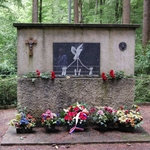 Women in the Resistance Movement
Women in the Resistance Movement
R. Barques
Epic of the “Rodina” Detachment: on the Activities of the Only Female Partisan Detachment in France
The publication covers the history of the only female partisan detachment “Rodina”, which participated in the Resistance movement in France. The author, examining the role of Soviet women in the Resistance movement, concludes that it is necessary to perpetuate the feat of the members of the Rodina detachment both in Russia and in France. In the preparation and writing of the article, documents were used from the archives of the Museum of National Resistance in Champigny-sur-Marne, Historical Defense Service of Vincennes, Commemorative notebooks of the Meurthe-et-Moselle Department, l’ARAC No. 856, interviews of residents of Thiel, A .FROM. Paramonova and N.I. Liskovets, children and grandchildren of members of the Resistance, as well as the works of French and Russian historians.
Publishing: 28/06/2021
How to cite: Barques R. Epic of the “Rodina” Detachment: on the Activities of the Only Female Partisan Detachment in France // Historical Courier, 2021, No. 3 (17), pp. 41–48. [Available online:] http://istkurier.ru/data/2021/ISTKURIER-2021-3-05.pdf
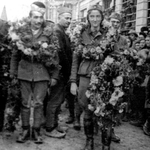 Women in the Resistance Movement
Women in the Resistance Movement
L. Škodrić
Women in the National Liberation Movement in Serbia (1941–1944)
This article examines the attitude towards women in units of the communist resistance movement – the People’s Liberation Movement (partisans) and analyzes the position of women in the detachments. The author concludes that despite the declarative support for gender equality, traditional relations prevailed in military units. Despite this, the very possibility of mass participation of women in battles represented a turning point in relation to the past, reflecting the specifics of the Second World War.
Publishing: 28/06/2021
How to cite: Škodrić L. Women in the National Liberation Movement in Serbia (1941–1944) // Historical Courier, 2021, No. 3 (17), pp. 49–58. [Available online:] http://istkurier.ru/data/2021/ISTKURIER-2021-3-06.pdf
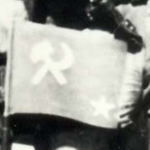 Soviet Prisoners of War and European Resistance Members
Soviet Prisoners of War and European Resistance Members
M. Ferrentino
Resistance Movement in Italy: Causes, Dynamics of Development
The article discusses the reasons for the emergence of such a phenomenon as Italian Resistance. The author concludes that the international underground network grew and strengthened as a result of the inclusion of other, non-communist, progressive forces in order to organize popular resistance to the fascist regimes that spread throughout Europe. In organizing the Resistance, the experience of the Italian communists became fundamental. The role of the Soviet military in the Italian Resistance is also investigated. Examples of the activities of Soviet partisans in Italy, human relations that developed between Italian and Soviet fighters are given.
Publishing: 28/06/2021
How to cite: Ferrentino M. Resistance Movement in Italy: Causes, Dynamics of Development // Historical Courier, 2021, No. 3 (17), pp. 59–68. [Available online:] http://istkurier.ru/data/2021/ISTKURIER-2021-3-07.pdf
 Soviet Prisoners of War and European Resistance Members
Soviet Prisoners of War and European Resistance Members
M.G. Talalay
Soviet Partisans in North-East Italy
The article describes in detail the activities of the Soviet contingent in strategically important areas on Italian territory: in Lazio, Tuscany, Reggio Emilia, near the defensive lines of the Wehrmacht. The author concludes that the Soviet partisans managed to make a significant contribution to the liberation of Italy.
Publishing: 28/06/2021
How to cite: Talalay M.G. Soviet Partisans in North-East Italy // Historical Courier, 2021, No. 3 (17), pp. 69–75. [Available online:] http://istkurier.ru/data/2021/ISTKURIER-2021-3-08.pdf
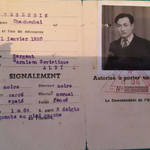 Soviet Prisoners of War and European Resistance Members
Soviet Prisoners of War and European Resistance Members
G.M. Mendikulova
Kazakhs in the European Resistance Movement: New Documents from Foreign Archives
This article is devoted to historical events that characterize the participation of Kazakhs in the Resistance Movement in Europe (primarily in France and Italy) during the Second World War. In recent years, documents from foreign archives, museums and libraries of France, Italy, Norway, Great Britain, Finland, Russia and other countries have been published, which shed light on the participation of Kazakhs in the events mentioned above. The author comes to the conclusion that during the Second World War, dozens of Kazakhs ended up on the territory of Italy and France, they took an active part in the people’s liberation anti-fascist partisan struggle on the territory of these countries.
Publishing: 28/06/2021
How to cite: Mendikulova G.M. Kazakhs in the European Resistance Movement: New Documents from Foreign Archives // Historical Courier, 2021, No. 3 (17), pp. 76–94. [Available online:] http://istkurier.ru/data/2021/ISTKURIER-2021-3-09.pdf
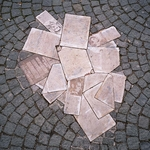 Soviet Prisoners of War and European Resistance Members
Soviet Prisoners of War and European Resistance Members
N.E. Vashkau, P.V. Teplovodskaya
The Battle of Stalingrad as a Turning Point in the Activities of the Anti-Fascist Group “White Rose”
The article examines the activities of the anti-fascist group “White Rose”, created by students of the University of Munich. The author highlights the reasons for the creation of the organization, the stay of students on the Eastern Front and the transition to more active Resistance actions after the Battle of Stalingrad. The paper concludes that the victory of the Red Army in Stalingrad prompted young people to call on the German people to revolt against the fascist dictatorship.
Publishing: 28/06/2021
How to cite: Vashkau N.E., Teplovodskaya P.V. The Battle of Stalingrad as a Turning Point in the Activities of the Anti-Fascist Group “White Rose” // Historical Courier, 2021, No. 3 (17), pp. 95–102. [Available online:] http://istkurier.ru/data/2021/ISTKURIER-2021-3-10.pdf
 Soviet Prisoners of War and European Resistance Members
Soviet Prisoners of War and European Resistance Members
O.N. Kationov, А.О. Kationova
Defectors of the Second Hungarian Army During the Battles on the Don in the Fall of 1942 – January 1943 as a Manifestation of European Resistance
Based on the journals of combat operations of the Red Army divisions, the article shows the chronicle of the transitions, the ethnic composition of the defectors of the 2nd Hungarian Army is determined. It is noted that the defectors were most often soldiers of non-Hungarian nationality: Jews, Rusyns, Romanians, Serbs and others. The information of the defectors supplemented the intelligence of the Red Army units, the very facts of the transition lowered the morale of the enemy troops, which makes it possible to assess the actions of the defectors as one of the spontaneous elements of the European Resistance movement.
Publishing: 28/06/2021
How to cite: Kationov O.N., Kationova А.О. Defectors of the Second Hungarian Army During the Battles on the Don in the Fall of 1942 – January 1943 as a Manifestation of European Resistance // Historical Courier, 2021, No. 3 (17), pp. 103–109. [Available online:] http://istkurier.ru/data/2021/ISTKURIER-2021-3-11.pdf
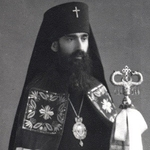 Soviet Prisoners of War and European Resistance Members
Soviet Prisoners of War and European Resistance Members
E.N. Chetveryakov
Novosibirsk Archpastor Archbishop Paul (Golyshev) – Member of the Resistance
The article tells about the life path of Archbishop Paul (Golyshev). In 1964-1972. he was the ruling bishop of the Novosibirsk diocese. Despite the fact that Vladyka Pavel spent half of his life in exile, he was a patriot of Russia. During World War II, the future archbishop was in Western Europe, where he nursed prisoners of war. For this he was arrested by the occupying German authorities. Archbishop Pavel (Golyshev) strove to act in accordance with the Christian vocation in all the circumstances of his life.
Publishing: 28/06/2021
How to cite: Chetveryakov E.N. Novosibirsk Archpastor Archbishop Paul (Golyshev) – Member of the Resistance // Historical Courier, 2021, No. 3 (17), pp. 110–116. [Available online:] http://istkurier.ru/data/2021/ISTKURIER-2021-3-12.pdf
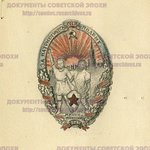 Military Heroics as a Socio-Cultural Phenomenon
Military Heroics as a Socio-Cultural Phenomenon
A.I. Savin
Heroism, Heroes and Awards: “Heroic Side” of the Great Patriotic War in the Memoirs of Contemporaries
The article analyzes the phenomenon of military heroism based on interviews with front-line tankers. The author comes to the conclusion about the high efficiency of the heroic concept and state policy aimed at glorifying the Soviet society, first of all, the soldiers and commanders of the Red Army. However, the mechanisms of the functioning of the Soviet reward system did not always adequately reward the sacrificial heroism of Soviet people, especially ordinary soldiers, female military personnel and junior command personnel, far from the high command and related privileges.
The image is taken from the copyright holder's website: http://sovdoc.rusarchives.ru
Publishing: 28/06/2021
How to cite: Savin A.I. Heroism, Heroes and Awards: “Heroic Side” of the Great Patriotic War in the Memoirs of Contemporaries // Historical Courier, 2021, No. 3 (17), pp. 117–126. [Available online:] http://istkurier.ru/data/2021/ISTKURIER-2021-3-13.pdf
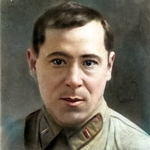 Military Heroics as a Socio-Cultural Phenomenon
Military Heroics as a Socio-Cultural Phenomenon
E. Meier
The Resistance of the Volga Tatar Prisoners of War in World War II: Heroes in the Transformation of Remembrance
The resistance of the Volga Tatar prisoners of war gained fame thanks to the great popularity of one of its key figures, Musa Jalil. In 1942, the Tatar poet Jalil was taken prisoner by Germany, joined the Idel-Ural legion, was one of the organizers of the anti-fascist Resistance group, and in 1944 he was executed along with ten other Tatars in the Berlin Ploetzensee prison. The article shows how the image of Jalil was transformed in the Soviet Union - from a traitor to a resistance fighter. During the Brezhnev era, the only large-scale state monument to a Soviet prisoner of war was erected in Kazan. The party leadership and other regional leaders of the TASSR managed to present the Tatar, a former prisoner of war and legionnaire as a hero of the Great Patriotic War – both in the Soviet Union and at the international level. This figure provides important stimuli for scientific research and public debate aimed at rethinking long-standing narratives about Resistance and collaboration, heroes and traitors.
Publishing: 28/06/2021
How to cite: Meier E. The Resistance of the Volga Tatar Prisoners of War in World War II: Heroes in the Transformation of Remembrance // Historical Courier, 2021, No. 3 (17), pp. 127–134. [Available online:] http://istkurier.ru/data/2021/ISTKURIER-2021-3-14.pdf
 Military Heroics as a Socio-Cultural Phenomenon
Military Heroics as a Socio-Cultural Phenomenon
K.V. Sak
Participants of the Resistance Movement in France and the Soviet Award Diplomacy (1955–1965)
The article is devoted to the award practices of the USSR in 1955–1965 in relation to the participants of the Resistance in France. During the war, Soviet award diplomacy served as a tool of “soft power” in the foreign policy of the USSR. The awarding of Resistance members was one of the main directions of the Soviet award policy in relation to the capitalist countries. The French awards were aimed at a Western audience and pursued political goals: on the one hand, they supported the communist movement in a capitalist country, on the other, they allowed propaganda of the peacemaking image of the USSR. The awarding of Soviet citizens and compatriots was aimed at creating an official list of new heroes and served as a means of propaganda among the anti-Soviet emigration.
Publishing: 28/06/2021
How to cite: Sak K.V. Participants of the Resistance Movement in France and the Soviet Award Diplomacy (1955–1965) // Historical Courier, 2021, No. 3 (17), pp. 135–146. [Available online:] http://istkurier.ru/data/2021/ISTKURIER-2021-3-15.pdf
 National Struggle Behind Enemy Lines and on the Fronts of the Great Patriotic War
National Struggle Behind Enemy Lines and on the Fronts of the Great Patriotic War
Yu.N. Arzamaskin
Soviet Partisans in the Second World War
The article reveals the features of the organization of the partisan movement during the war, the main form of which was the armed struggle. It is concluded that it is the nationwide partisan movement in the USSR that distinguishes it from the Resistance movement in Europe and Asia during the Second World War; the partisan movement became perhaps the most vivid expression of the nationwide nature of resistance to the aggressor and one of the main sources of our victory.
Publishing: 28/06/2021
How to cite: Arzamaskin Yu.N. Soviet Partisans in the Second World War // Historical Courier, 2021, No. 3 (17), pp. 147–153. [Available online:] http://istkurier.ru/data/2021/ISTKURIER-2021-3-16.pdf
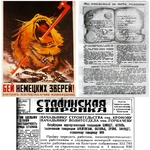 National Struggle Behind Enemy Lines and on the Fronts of the Great Patriotic War
National Struggle Behind Enemy Lines and on the Fronts of the Great Patriotic War
A.A. German
Contribution of the USSR Germans to Repelling Nazi Aggression During the Great Patriotic War
The article is devoted to the analysis of the contribution of Germans – residents of the USSR – to the Victory in the Great Patriotic War. The author, analyzing many facts, creates a real picture of the participation of Soviet Germans in repelling Nazi aggression. It is concluded that the contribution of the Soviet Germans to the Victory requires further study and wide coverage. This is the only way to overcome the still not obsolete stereotypes of negative attitudes towards Russian Germans, inherited from distant Stalinist times, and thereby contribute to strengthening the unity and mutual respect of the peoples of multinational Russia.
Publishing: 28/06/2021
How to cite: German A.A. Contribution of the USSR Germans to Repelling Nazi Aggression During the Great Patriotic War // Historical Courier, 2021, No. 3 (17), pp. 153–163. [Available online:] http://istkurier.ru/data/2021/ISTKURIER-2021-3-17.pdf
 Post-War Fates of Soviet Prisoners of War and Ostarbeiters
Post-War Fates of Soviet Prisoners of War and Ostarbeiters
N.M. Markdorf
The Fates of Soviet War Prisoners – Members of the European Resistance Movement
In the article, the author examines the fate of Soviet prisoners of war - members of the Resistance Movement in European countries. The article was written on the basis on documents from the State Archive of the Russian Federation (GARF), the Archive of Social and Political History (RGASPI), as well as the Archive of the Information Center of the Main Directorate of the Ministry of Internal Affairs of Russia in the Kemerovo Region (Department of Archival Information and Rehabilitation). The author comes to the conclusion that participation in the European Resistance movement was not a reason for being released from the special settlement.
Publishing: 28/06/2021
How to cite: Markdorf N.M. The Fates of Soviet War Prisoners – Members of the European Resistance Movement // Historical Courier, 2021, No. 3 (17), pp. 164–172. [Available online:] http://istkurier.ru/data/2021/ISTKURIER-2021-3-18.pdf
 Post-War Fates of Soviet Prisoners of War and Ostarbeiters
Post-War Fates of Soviet Prisoners of War and Ostarbeiters
S. Karner
On the Issue of Soviet Citizens’ Rationale Behind the Decision to Remain in Austria after World War II
The article examines the motives of Soviet citizens who, while in Austria, adopted in 1945–1946. decision not to return to the USSR. The main source for writing the work was the testimonies of former Soviet citizens who remained after 1945 in Austria. The author concludes that the main reason for staying in a foreign land was the social ties that developed between the forced laborers and the Austrians, as well as the fear of the Stalinist regime, which severely punished both voluntary and forced collaborators. However, the publication notes that the overwhelming number of forced laborers chose, despite potential repression, to return to the Soviet Union.
Publishing: 28/06/2021
How to cite: Karner S. On the Issue of Soviet Citizens’ Rationale Behind the Decision to Remain in Austria after World War II // Historical Courier, 2021, No. 3 (17), pp. 173–179. [Available online:] http://istkurier.ru/data/2021/ISTKURIER-2021-3-19.pdf
 The Great Patriotic War as a “Place of Memory”
The Great Patriotic War as a “Place of Memory”
O.V. Kapustina
Preserving the Historical Memory of the People as a Volunteer Practice
The article actualizes the modern problems of patriotic and civic education of youth. The analysis of regulatory documents of the federal and regional levels, regulating the activities of executive authorities, institutions of the social sphere, culture and education to ensure the implementation of the strategy of patriotic education. An attempt has been made to define in a generalized form the goal, objectives, directions and forms of patriotic and civic education of young people. Using the example of events and activities dedicated to the 75th anniversary of the Great Victory and held in the Russian Federation during 2020, the experience of volunteer activities to preserve the historical memory of the people, which united different generations, different nationalities, and different cultures, is presented. In conclusion, the author comes to the conclusion that the patriotic education of the younger generation is an integral system of interaction of all social institutions: from the family to the state.
Publishing: 28/06/2021
How to cite: Kapustina O.V. Preserving the Historical Memory of the People as a Volunteer Practice // Historical Courier, 2021, No. 3 (17), pp. 180–184. [Available online:] http://istkurier.ru/data/2021/ISTKURIER-2021-3-20.pdf
 The Great Patriotic War as a “Place of Memory”
The Great Patriotic War as a “Place of Memory”
D.V. Chernov
Tolerance, Patriotism and Social Well-Being of Modern Students
The article examines the results of a study on the influence of tolerance and patriotism on the formation of spiritual and moral values of student youth. The presented results of the sociological survey clarify the peculiarities of youth perception of the issues of patriotism and tolerance in the context of academic migration processes in modern Russia. The findings of the study confirm the possibility of using the categories of tolerance and patriotism as indicators of the social well-being of young people, through which the features of social behavior and personality formation of the younger generation are revealed.
Publishing: 28/06/2021
How to cite: Chernov D.V. Tolerance, Patriotism and Social Well-Being of Modern Students // Historical Courier, 2021, No. 3 (17), pp. 185–190. [Available online:] http://istkurier.ru/data/2021/ISTKURIER-2021-3-21.pdf
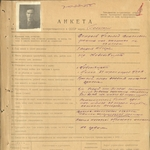 Open Archives
Open Archives
O.L. Chernobay
The Anti-Fascist Underground in the Buchenwald Concentration Camp in the Testimony of N.S. Simakov (1946–1947)
The article is devoted to the organization of underground groups of Soviet prisoners of war in the Buchenwald concentration camp to coordinate work with civilian Soviet prisoners under the leadership of NS. Simakov, his fate and role in the implementation of the connection of the Russian center with the international and in the organization of the April 11, 1945 uprising itself. The work of the entire camp underground is highlighted, all directions and forms of resistance of the Soviet prisoners of Buchenwald are analyzed, and a detailed plan of the uprising is presented. The role of the networks of the camp resistance is characterized, the participation of Austrian, German and Czech communists in them.
Publishing: 28/06/2021
How to cite: Chernobay O.L. The Anti-Fascist Underground in the Buchenwald Concentration Camp in the Testimony of N.S. Simakov (1946–1947) // Historical Courier, 2021, No. 3 (17), pp. 191–199. [Available online:] http://istkurier.ru/data/2021/ISTKURIER-2021-3-22.pdf



